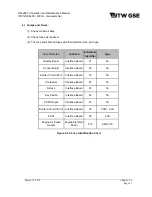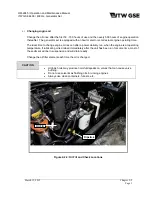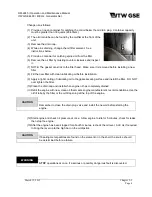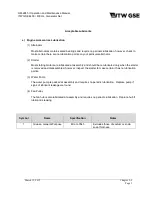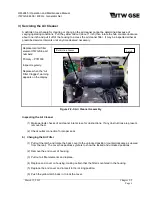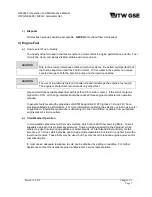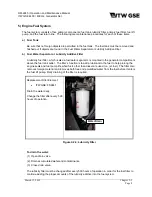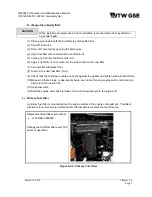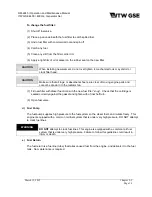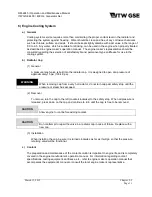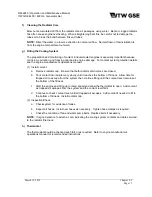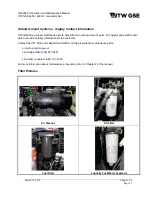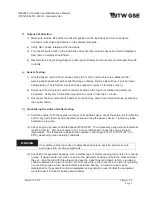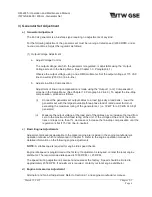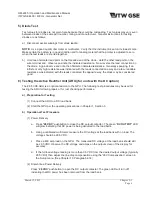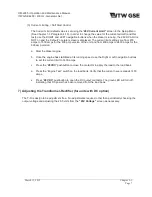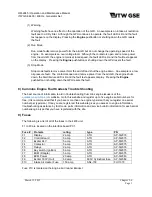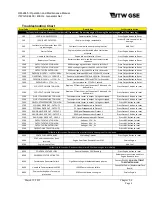
OM-2245 / Operation and Maintenance Manual
ITW GSE 4400 / 400 Hz. Generator Set
March 15, 2015
Chapter 2-2
Page 13
f)
Cleaning the Radiator Core
Blow out accumulated dirt from the radiator core air passages, using water. Bent or clogged radiator
fins often cause engine overheating. When straightening bent fins, be careful not to damage the
tubes or to break the bond between fins and tubes.
NOTE:
Direct the water in a reverse direction to normal air flow. Normal flow on this installation is
from the engine compartment out ward.
g) Filling the Cooling System
The preparation and monitoring of coolant in liquid-cooled engines is especially important because
corrosion, cavitation, and freezing can lead to engine damage. For coolant system protection details
see the engine manufacturer’s operations manual.
(1) Install coolant
a
Remove radiator cap. Be sure that both radiator drain valves are closed.
b
Pour coolant into radiator very slowly until it reaches the bottom of fill neck. Allow time for
trapped air to escape from the system then continue filling until the coolant level remains at
the bottom of the fill neck.
c
Start the engine and bring up to rated speed and allow the thermostat to open. Add coolant
as trapped air escapes from the system and the coolant level falls.
d
Continue to check coolant level until all trapped air escapes. Add coolant if needed to fill to
the bottom of fill neck. Install radiator cap.
(2) Inspection/Check
a
Check system for evidence of leaks.
b
Inspect all hoses. Install new hoses as necessary. Tighten hose clamps as required.
c
Check the condition of fan and water pump belts. Replace belts if necessary.
NOTE:
It is good practice to attach a card, indicating the cooling system contents and date serviced,
to the radiator filler neck.
h) Thermostat
The thermostat should be checked each fall, or as required. Refer to engine manufacturer’s
operations manual for recommended instructions.


